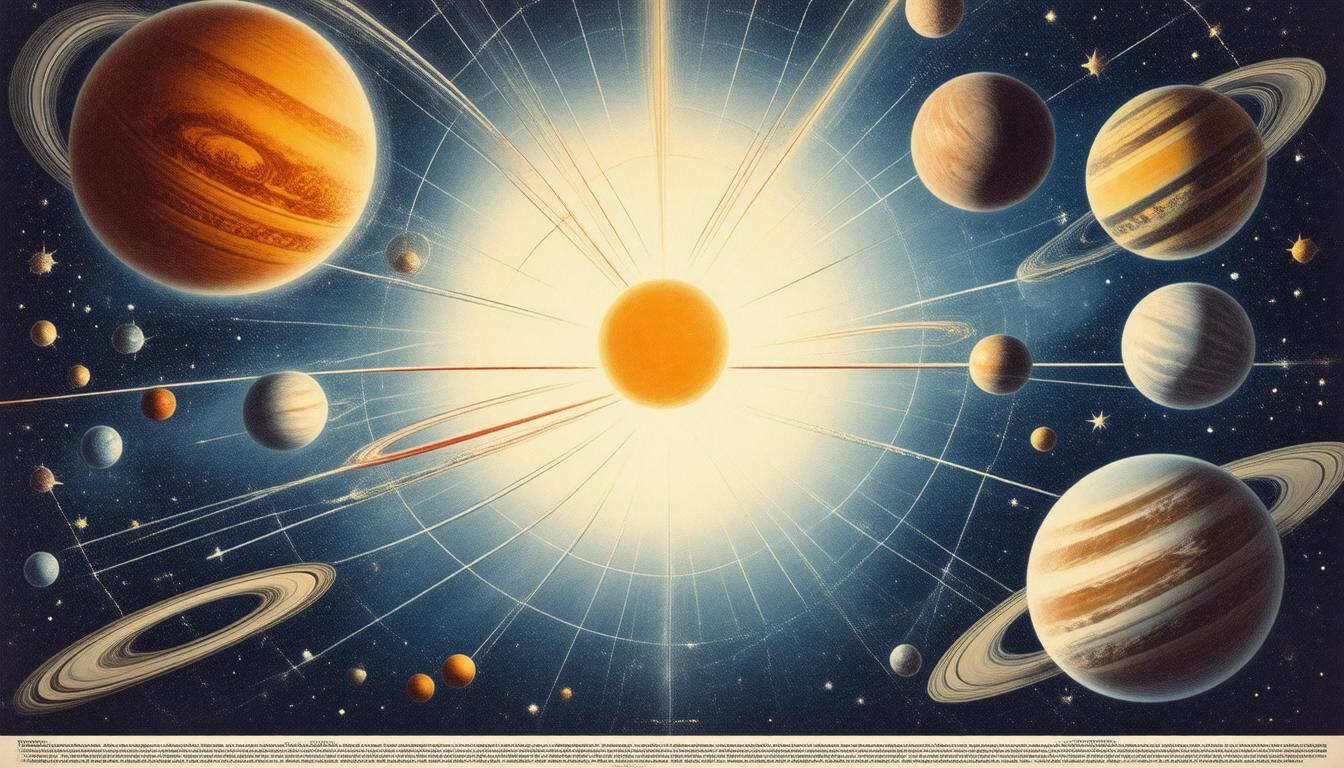In the vast expanse of the cosmos, the concept of an orbit captivates both scientists and enthusiasts alike. An orbit represents the gravitational relationship between celestial bodies, dictating their movement through space. Understanding the intricacies of orbit is crucial for decrypting the mysteries of our universe, from the simplistic dance of the moon around the Earth to the complex paths of spacecraft navigating the solar system. In this article, we will delve into the definition and key concepts of an orbit, explore the forces that underpin orbital motion, classify various types of orbits and their significance, and examine the diverse applications of orbital mechanics in modern science.
Topics
- An orbit is defined as the gravitational path followed by an object around a celestial body.
- Orbital motion is governed by fundamental forces including gravity and inertia.
- Different types of orbits, such as geostationary and elliptical, serve various scientific and practical purposes.
- Understanding orbital mechanics is crucial for advancements in satellite technology and space exploration.
- Applications of orbital mechanics extend beyond space, influencing fields like telecommunications and global positioning systems.
What is an Orbit? Definition and Key Concepts
An orbit is a gravitationally bound path that one celestial body takes around another due to the influence of gravity. It is a fundamental concept in astronomy and physics, describing how planets, moons, and artificial satellites move in elliptical or circular paths around larger bodies, like stars or planets. The shape of an orbit can vary; they may be nearly circular, highly elliptical, or even parabolic. Key concepts related to orbits include the gravitational force, which acts as the centripetal force keeping the orbiting body in motion, and Kepler’s laws of planetary motion, which describe how objects orbiting the sun adhere to specific patterns. Understanding an orbit is crucial for many fields, including astrophysics, space exploration, and satellite technology, as it enables scientists to predict the movement of celestial bodies and plan missions accordingly.
The Forces Behind Orbital Motion
Understanding the forces behind orbital motion is fundamental to grasping how celestial bodies navigate the vast expanse of space. At the heart of the concept of orbit lies gravitational attraction, which serves as the primary force allowing planets, moons, and artificial satellites to maintain their paths around larger bodies like stars and planets. According to Newton’s Law of Universal Gravitation, every mass exerts an attractive force on every other mass, meaning that the gravitational pull of the Earth keeps the Moon in its orbit. This delicate balance between the gravitational force and the inertia of the orbiting object creates a stable, elliptical path, allowing it to travel without falling into the larger body or flying off into space. Additionally, other factors such as the speed of the orbiting body and its distance from the central mass play crucial roles in defining the characteristics of the orbit. Understanding these forces not only deepens our knowledge of the universe but also enhances our ability to navigate the ever-evolving field of astrophysics and space exploration.
‘We are but a small speck in the great cosmos, and yet we dance gracefully within the orbits of our stars.’ – Unknown
Types of Orbits and Their Significance
Understanding the various types of orbits is crucial for comprehending how objects interact with Earth and other celestial bodies. The most common types of orbit include geostationary, low Earth orbit (LEO), polar orbit, and elliptical orbit. Each of these orbits serves different purposes and functions essential for satellite deployments, scientific observations, and telecommunications. For instance, geostationary orbits allow satellites to remain fixed relative to a specific point on Earth, making them invaluable for weather forecasting and satellite TV. On the other hand, low Earth orbits are crucial for missions such as the International Space Station or Earth-observing satellites, as they offer a closer view and faster data transmission. Polar orbits, where satellites travel over the poles, enable complete coverage of the Earth’s surface, which is significant for mapping and environmental monitoring. Moreover, the elliptical orbit is often employed in missions that require varying distances from the Earth, allowing satellites to perform extensive analyses of specific regions. Each type of orbit has its unique characteristics and significance, highlighting the importance of orbital mechanics in modern technology and exploration.
Applications of Orbital Mechanics in Modern Science
Orbital mechanics, the branch of physics that studies the motions of celestial bodies, plays a crucial role in a variety of modern scientific applications. One of the most significant uses of orbit calculations is in space exploration, where understanding the intricate paths of spacecraft allows for successful missions to planets, moons, and asteroids. By accurately predicting orbits, scientists can plan trajectories that maximize fuel efficiency and travel time, ensuring that missions such as Mars exploration or the recent Artemis lunar missions can be executed effectively. Furthermore, orbital mechanics contributes to satellite technology, influencing everything from telecommunications to weather forecasting. Satellites rely on precise orbital placements for functions like global positioning, data collection, and environmental monitoring, making our daily lives heavily dependent on these calculations. In astrodynamics, researchers use orbital models to enhance our understanding of gravitational interactions and predict the long-term stability of satellite orbits, which is vital for preventing space debris collision. As we continue to expand our presence in space, the applications of orbital mechanics will only grow, showcasing its importance in modern science.
Improve your professional profile AND do your part to contribute and advance human civilization by becoming a member today.



